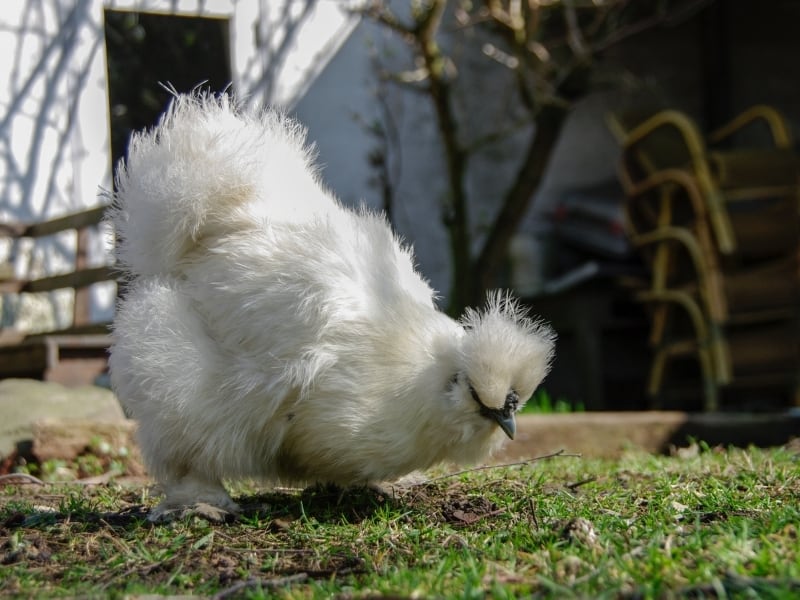

Once they are past a day old, Silkies should also have their health checked periodically by a veterinarian specialized in poultry for any signs of illness, parasites, or injury.īesides the high risk of developing Marek's Disease, Silkie chickens have a great immune system as they have been bred over centuries! Vaccinating day-old baby chicks is the best way to prevent this disease from affecting your chickens. However, they are highly susceptible to Marek's Disease, which can result in death. DietĬredit: / have the same immune system as any other chicken and have a long life expectancy of up to 9 years. Regarding Silkies, some of the most important things to consider are proper nutrition, housing, and health check-ups. Silkie chickens are not the most high-maintenance chicken breed, but they still require care and attention to thrive. With the right care, Silkies will make a fantastic addition to your farm. Overall, Silkies are a great addition to any flock! They may not lay as many eggs as other chickens, but they make up for it with their sweet disposition and distinct physical appearance. They also make for popular exhibition birds due to their unique looks and calm personalities.

Silkie chickens are also fantastic parents known to keep their chicks safe and warm. Silkie chicken eggs are small (only 1.5 oz.) and usually only lay around 2-4 eggs a week. While Silkie chickens do provide eggs, that is not their main purpose. Silkies are also the perfect chicken for small backyard flocks due to their small size (they only grow up to just past one foot tall).īantam Silkies are great to have around, as they are generally free-range in the yard while providing eggs, bug control (they typically enjoy eating bugs), and entertainment. With such a long and interesting history of Silkie chickens, it's no wonder why people are still drawn to them today! PersonalityĬredit: mentioned, Silkies are known for being incredibly gentle and affectionate birds, making them the ideal pet for families. They were officially recognized as a poultry breed and submitted to the Standard of Perfection in 1874. They made their way to the West via the Silk Route, an ancient trade route. Silkie chickens have been providing eggs and meat for the affluent for centuries and have been used for medicinal purposes throughout history. Their breeding then increased under the Roman Empire. Silkies arrived in Europe circa 100 BC, when they helped stock modern poultry farms with their distinctive soft feathers. Among Western literature, Silkie chickens were first mentioned by Marco Polo in the 13th century when he referred to Silkies as "furry" chickens during his travels in Asia. History of the Silkie chickenĬredit: / chickens are an ancient breed of chicken with origins tracing back centuries in Asia (most notably China, however, there are discussions about what part of Asia). Silkie chickens are also gaining attention among poultry farmers because they can survive in colder climates than most other breeds (as long as they have shelter, they can survive in temperatures as low as 0 degrees Fahrenheit).ĭespite being one of the oldest known poultry breeds, Silkies remain popular today due to their docile nature, plentiful meat production, and relatively easy upkeep compared to other poultry breeds. Silkies are popular as pets due to their docile nature and gentle disposition (they're even great with children!) They also have feathered feet.Īll of these characteristics make Silkie chickens stand out from ordinary chickens. Some Silkie chickens are bearded, while others are not. Silkie chickens lay small eggs and have walnut-shaped combs.
#SILKIE CHICKEN BLUE SKIN#
Silkies also have black or bluish skin underneath their soft fluffy feathers, which gives the birds an exotic look. Silkies are known for their fluffy, soft plumage that has a texture, unlike most other breeds of chicken. Credit: / chickens are a breed of chicken with an incredibly unique and attractive appearance, making them incredibly popular and much loved.


 0 kommentar(er)
0 kommentar(er)
